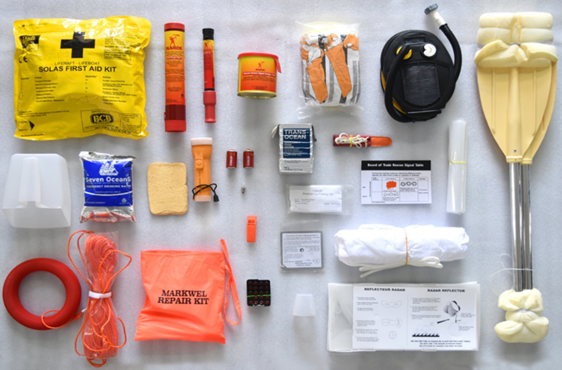1.5 SOLAS Lifeboat Regulations and Equipment
SOLAS Lifeboat Regulations and Equipment
SOLAS mandates that lifeboats be safe, seaworthy, and equipped to ensure the survival of passengers and crew in emergency situations. These regulations cover factors such as buoyancy, stability, propulsion, safety features, and emergency procedures.
Key points emphasized in these regulations include:
- Rapid deployment
- Adequate capacity
- Safety of passengers during launch and in the water
- Self-sufficiency for a prolonged period at sea
SOLAS lifeboats must meet the following criteria:
- Unsinkable and stable: They must be either fully or partially enclosed.
- Capacity: The maximum capacity is limited to 150 persons.
- Launch time: Must be launched within 10 minutes on passenger ships and 3 minutes on cargo ships.
- Embarkation: Equipped with boarding ladders for those in the water.
- Accessibility: Must have openings large enough for a stretcher.
- Non-slip surfaces: Walking areas must have non-slip surfaces.
- Propeller safety: Propellers must pose no risk to people in the water.
- Fire resistance: Hull and canopy must be made of fire-retardant or non-combustible materials.
- Propulsion: Diesel-powered, capable of 6 knots, with a 24-hour range, and at least 2 knots.
- Engine start: Manual or electric start (with two independent power sources for electric).
- Steering: Rudder controlled from a fixed position with a backup tiller.
- Lifeline: A lifeline must be fitted around the perimeter (except near the propeller).
- Self-righting: Boats that don't self-right must have handles on the underside for people to grab.
- Watertight compartments: Must have watertight compartments for equipment and a system to collect rainwater.
- Launching mechanism: All hooks must release simultaneously. Two modes: normal and emergency (requiring deliberate action).
- Hydrostatic release: Prevents accidental launch when not in the water.
- Clear controls: Launching controls must be clearly marked.
- Natural light: Transparent hatches for natural light.
Testing and maintenance of lifeboats and launching equipment
Boats, hooks, davits and the load release system must be examined yearly. Davits must be overload tested every five years using a dynamic weight test above the official capacity of the lifeboat. Freefall lifeboats must be tested every three months.
Lifeboat equipment

All items of lifeboat equipment, except for boathooks must be secured inside the lifeboat by lashings, storage in lockers or compartments. The normal equipment of every lifeboat consists of:
- Buoyant oars to make headway in calm seas.
- Two boat hooks
- Buoyant bailer and two buckets
- Survival manual
- Compass with suitable means of illumination
- Sea-anchor of adequate size fitted with a shock-resistant hawser
- Two painter lines
- Two hatchets, one at each end of the lifeboat
- 3 l of fresh water for each person the lifeboat is permitted to accommodate
- Rustproof dipper with lanyard
- Rustproof graduated drinking vessel
- Food rations, not less than 10,000 kJ for each person
- 4 rocket parachute flares
- 6 hand flares
- 2 buoyant smoke signals
- Waterproof electric torch suitable for Morse signaling together with one spare set of batteries and one spare bulb in a waterproof container
- Daylight signaling mirror with instructions for its use for signaling to ships and aircraft.
- Waterproof copy of the life-saving signals prescribed by regulation V/16 of the International Convention for the Safety of Life at Sea, 1974
- Whistle or equivalent sound signal
- First-aid kit in a waterproof case
- 6 doses of anti-seasickness medicine and a seasickness bag for each person
- Knife to be kept attached to the boat by a lanyard
- 3 tin-openers
- 2 buoyant rescue quoits
- Manual pump
- Set of fishing tackle
- Tools for minor adjustments to the engine and its accessories
- Portable fire-extinguishing equipment suitable for extinguishing oil fires
- Searchlight
- Radar reflector
- Thermal protective aids